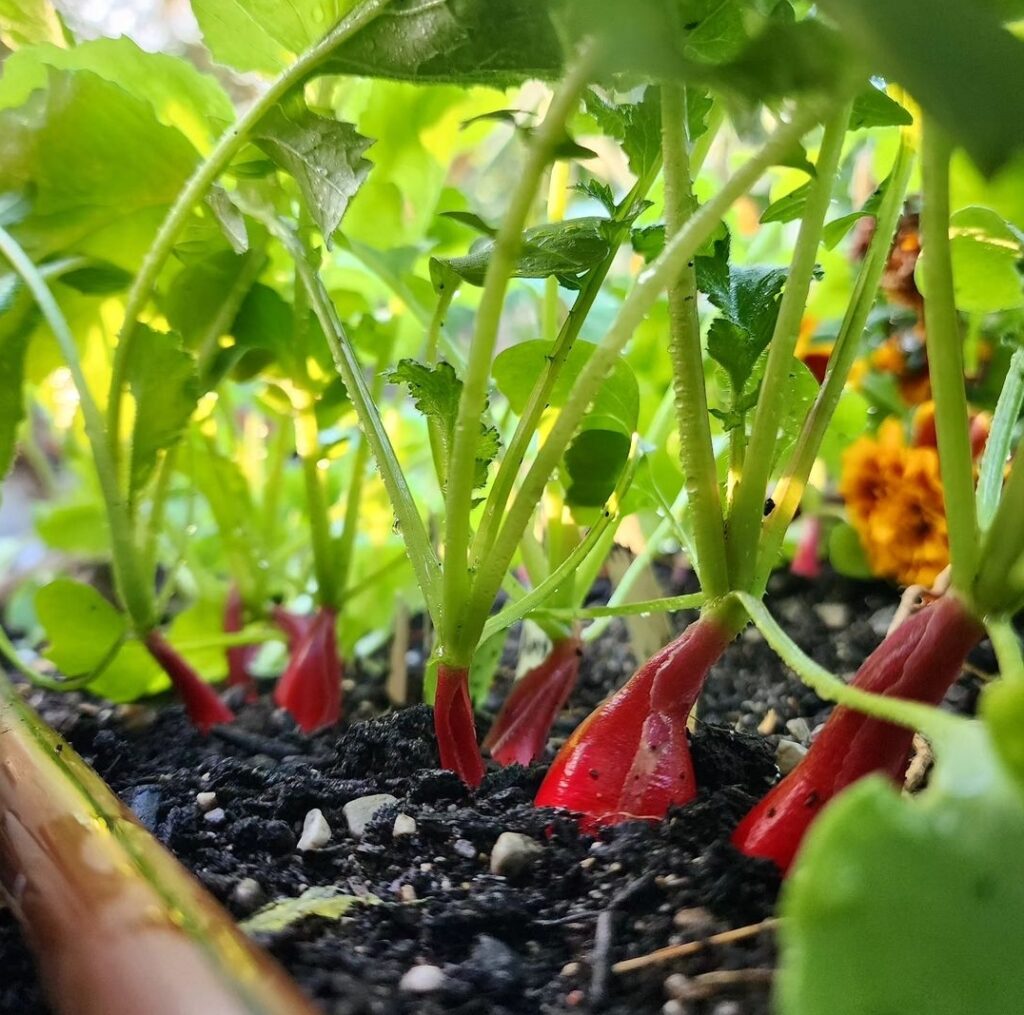Plan a Fall Garden
(to Extend your Growing Season)

Gardeners often talk about their growing season as the time between the last frost in spring and the first frost in fall. Did you know that you can grow and harvest a lot of food outside of your “growing season”? And, depending on your typical fall/winter weather, you can do it without a greenhouse. The trick with successful fall (and winter) gardening is to plan it well in advance. For some fall/winter crops, you should be sowing them in spring (e.g., parsnip). Others should be started from seed indoors in mid-summer (e.g., broccoli). The easy wins can be direct seeded in the garden when fall vibes are in the air and it feels right to be thinking about a fall garden (e.g., lettuce, spinach).

Know Your Fall
The ability to grow beyond those frost-free months is dependent on several factors, but most importantly you need to consider light and temperature. Both of these conditions are affected by the Earth’s tilt and your latitude. The more Northern your latitude, the weaker the sun becomes as the orbit passes the autumnal equinox. When we reach the winter solstice, the Earth’s axis is pointed directly away from the sun, and Northern latitudes get our shortest and coldest days of the year.
For those of us in the 43rd parallel, our shortest days still provide around 10 hours of sunlight, but that sunlight has to travel further through our atmosphere to reach us. You can directly observe this change in the angle of sunlight – the sun appears lower in the sky in the fall and winter. This indirect light is much less strong than the summer sun, and therefore 10 hours of daylight in the fall and winter is not the same as 10 hours of daylight in the summer for photosynthesizing plants. Even for plants that can survive frigid temperatures, without strong enough light, they will not continue to grow.

This means that fall crops will need time to grow before the light becomes too weak (usually around the fall equinox, mid- to late-September). Crops will also need time to grow before the weather becomes too cold. You can see temperature patterns for your area on weather sites like this one. This is what our fall temperatures tend to look like:

The punchline is that a fall garden must be planned well in advance.
Fall Crop Timing and Temperatures (Table 1)
Now that you’ve thought about your fall climate, you can use this table to calculate when to start growing the fall crops you want so they reach maturity in the fall garden.
For winter gardening, look at the lowest temperatures your favourite crops can survive (the temperatures provided are for unprotected plants – growing in the open garden). If your winters are colder than your favourite crops can survive, consider adding protection like cold frames to keep them alive longer in the winter. Winter crops will not continue growing without supplemental light and heat, but they will hold form in the ground to be harvested as needed.

Days to harvest is given in a range because factors like variety, sunlight, temperature, and soil quality all influence how long it takes any given plant to grow to harvest. Some plants may also be harvested as baby greens or left to grow into full plants before harvest.
A minimum survival temperature is given in a range because factors like humidity, snow cover, and a rapid freeze-thaw cycle impact survival in cold temperatures. Varieties of each plant have different cold tolerances, too. Look for cold tolerance or “for winter growing” on seed packets for best success.
Finally, some cool-weather crops were not included in this list because they survive cold temperatures as young plants but will not fruit in lower temperatures (e.g., peas). This makes them ideal spring plants and less ideal fall plants.
Benefits of a Fall Garden
Before we mastered fall gardening, the first frost made our entire yard brown, soggy, and seemingly lifeless. Now, we can eat fresh from the garden all winter long (even if it’s only greens, some perennial herbs, and the odd frozen carrot or parsnip). The greatest benefit for us is having a reason to get out to the garden. We get outside, dig through snow to find hidden vegetables, and breathe in the fresh air. We often use this time, while the kids build snow people or toboggan down the hill, to plan for spring. We take stock of what remains in the beds, decide which beds to amend with compost in the spring (and which ones will still contain winter crops when spring rolls around).
That’s another benefit – many fall and winter crops will still be in the ground to feed you in late winter and early spring before young, new growth has emerged. Spinach, parsnips, and kale are excellent at overwintering and being there for you in the spring. Many of these plants that will survive the winter (e.g., carrots, kale, kohlrabi) will also go to seed later in the spring. So, if you keep fall crops alive over winter, you get a bonus of free seeds the following year.
One of the sweetest benefits of a fall garden is just that – sweetness! Most frost-tolerant crops will concentrate the sugars in their cells to help them survive freezing temperatures. For this reason, many cool-weather crops are at their peak flavour when grown in the fall and exposed to frost.
Finally, if you lost plants and patience to insect pests over the summer, let the freeze deal with them and enjoy a gardening season with little to no pest pressure. Fall (and winter) gardening requires a different approach from “growing season” gardening, but if you can pull out a calendar and some seed packets and do a little planning, you can be successful and reap the rewards.


